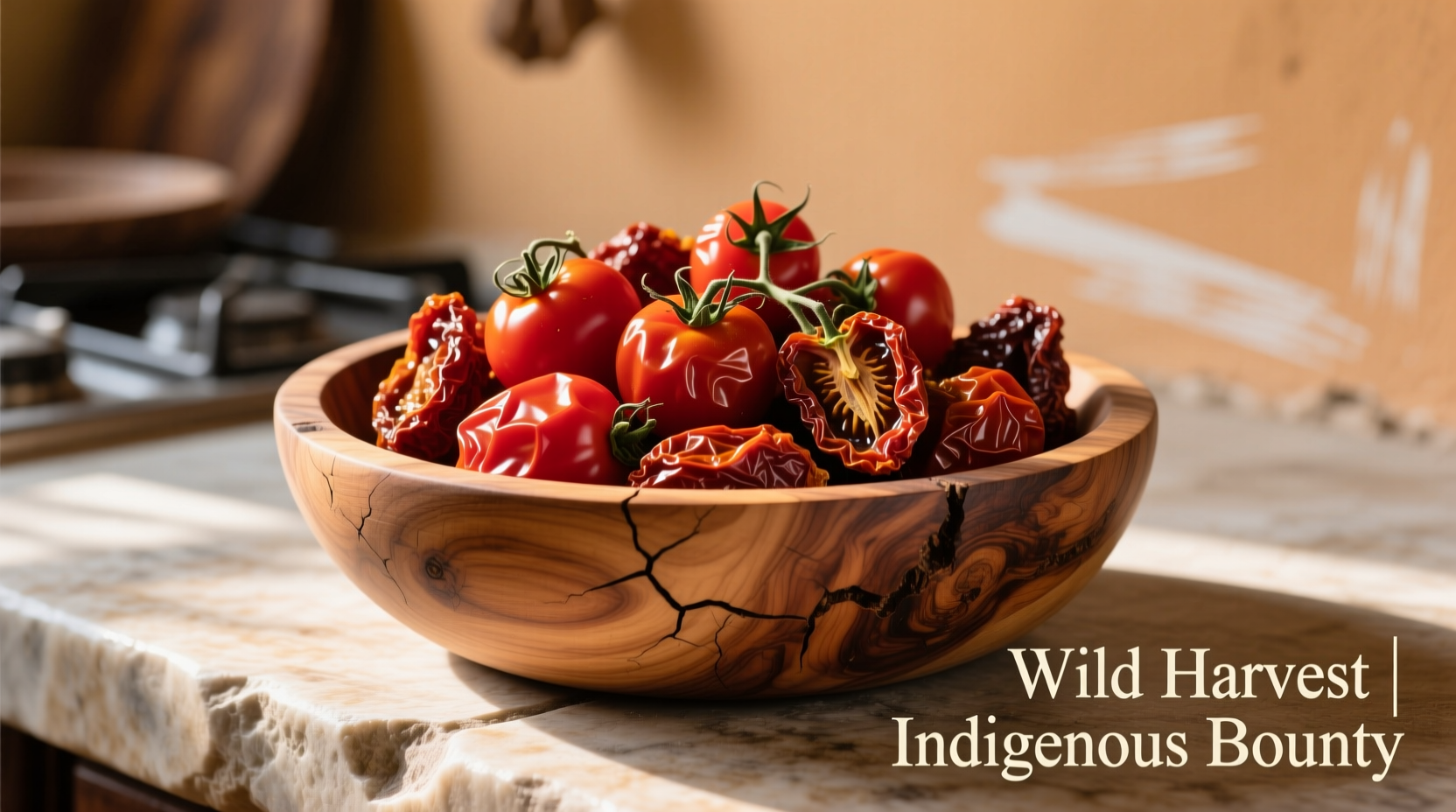Have you ever wondered how to elevate your dishes with an ingredient that combines smoky depth, subtle sweetness, and cultural significance? Bush tomatoes—nature's hidden gem from Australia's arid regions—offer exactly that. These small, sun-dried fruits pack a flavor punch that transforms ordinary meals into extraordinary culinary experiences. Whether you're a home cook seeking new flavor dimensions or a professional chef exploring indigenous ingredients, understanding how to properly select and use bush tomatoes opens doors to authentic Australian cuisine while respecting its deep cultural roots.
What Exactly Are Bush Tomatoes?
Bush tomatoes (Solanum centrale) belong to the nightshade family and grow wild across Australia's central desert regions. Unlike their cultivated cousins, these native fruits develop their signature flavor through natural sun-drying on the plant—a process Aboriginal communities have utilized for millennia. The Anangu people of Central Australia traditionally call them "akudjura," harvesting them after the dry season when they've naturally dehydrated to concentrate their complex flavors.
These small, raisin-sized fruits measure approximately 1-2 centimeters in diameter and range in color from dark brown to reddish-black when fully dried. Their unique flavor profile—described as a blend of tamarind, caramel, and sun-dried tomato with subtle smoky notes—makes them invaluable in both traditional Aboriginal cooking and contemporary Australian cuisine.
| Characteristic | Bush Tomato | Regular Tomato |
|---|---|---|
| Natural Habitat | Australian desert regions | Cultivated worldwide |
| Flavor Profile | Smoky, caramel, tamarind-like | Sweet, acidic, vegetal |
| Vitamin C Content | Approximately 250mg per 100g | Approximately 80mg per 100g |
| Traditional Preparation | Naturally sun-dried on plant | Consumed fresh or processed |
From Ancient Traditions to Modern Kitchens: A Flavor Evolution
The journey of bush tomatoes from Aboriginal staple to gourmet ingredient spans thousands of years. Archaeological evidence from the Australian National University confirms Aboriginal communities have utilized bush tomatoes for at least 10,000 years, primarily as a portable, nutrient-dense food source during seasonal migrations across arid landscapes. Traditional harvesting methods involved collecting the naturally dried fruits after the dry season, then grinding them into paste or mixing with water to create nutrient-rich sauces.
Modern culinary adoption began in the 1980s when Australian chefs started incorporating native ingredients into fine dining. Today, bush tomatoes appear in everything from gourmet sauces to artisanal chocolates. The Australian Native Food and Botanicals organization reports a 300% increase in commercial bush tomato production since 2010, reflecting growing appreciation for this unique ingredient while providing economic opportunities for Indigenous communities.

Practical Guide to Sourcing and Storage
Finding authentic bush tomatoes requires knowing where to look. Reputable suppliers like Bushfood.com.au and Outback Food work directly with Aboriginal communities to ensure ethical harvesting practices. You'll typically find them in three forms:
- Whole dried berries - Best for infusing broths and slow-cooked dishes
- Ground powder - Ideal for rubs, sauces, and baked goods
- Concentrated paste - Perfect for quick flavor enhancement
Proper storage maintains their delicate flavor compounds. Keep dried bush tomatoes in airtight containers away from light and moisture. When stored correctly at room temperature, they maintain peak flavor for 12-18 months. Refrigeration extends their shelf life to two years but may cause slight texture changes. Never freeze bush tomatoes, as this damages their complex flavor compounds.
Mastering Culinary Applications: When and How to Use Bush Tomatoes
Bush tomatoes shine brightest when used thoughtfully. Their intense flavor means a little goes a long way—typically 1-2 teaspoons of powder or 5-10 whole berries per serving. Understanding context boundaries prevents flavor imbalances:
Perfect Pairings:
- Red meat dishes (especially kangaroo and lamb)
- Creamy sauces and soups
- Roasted root vegetables
- Chocolate-based desserts
Avoid Combining With:
- Delicate seafood (overpowers subtle flavors)
- Strongly spiced curries (creates flavor conflict)
- Highly acidic dishes (diminishes unique characteristics)
Professional chefs at Melbourne's acclaimed Attica restaurant recommend adding bush tomato powder during the final 10 minutes of cooking to preserve volatile flavor compounds. For whole berries, soak them in warm water for 15 minutes before use to rehydrate while maintaining texture.
Five Creative Ways to Incorporate Bush Tomatoes
Transform your cooking with these practical applications that respect traditional knowledge while embracing modern techniques:
- Native Australian Tomato Sauce - Replace 10% of regular tomatoes with rehydrated bush tomatoes in your favorite tomato sauce recipe for added depth
- Smoked Meat Rub - Combine 2 tsp bush tomato powder with 1 tbsp smoked paprika and 1 tsp wattleseed for an authentic outback flavor profile
- Umami-Boosted Gravy - Add 5 rehydrated berries per cup of gravy during the final simmering stage
- Chocolate Bush Tomato Truffles - Incorporate 1 tsp powder per 200g dark chocolate for a surprising flavor dimension
- Native Herb Infusion - Steep 3 berries in hot water with lemon myrtle for a traditional Aboriginal-style tea
Nutritional Powerhouse with Cultural Significance
Beyond their culinary appeal, bush tomatoes offer impressive nutritional benefits. Research from the University of Adelaide confirms they contain three times more vitamin C than regular tomatoes, along with significant amounts of iron, magnesium, and antioxidants. Traditional Aboriginal medicine utilized them for treating colds and digestive issues—a practice now supported by scientific evidence of their antimicrobial properties.
When purchasing bush tomatoes, look for products certified by the National Indigenous Australians Agency, which ensures fair compensation for traditional knowledge holders. This ethical approach preserves cultural heritage while supporting sustainable harvesting practices that have maintained these plants for thousands of years.











 浙公网安备
33010002000092号
浙公网安备
33010002000092号 浙B2-20120091-4
浙B2-20120091-4